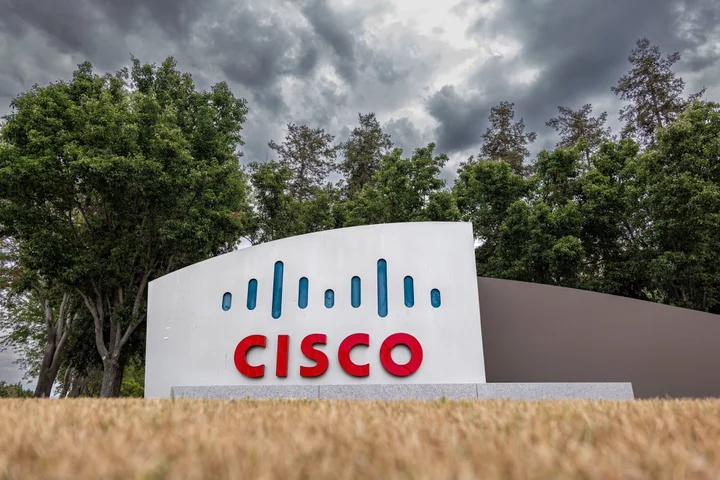Cisco Systems Inc., the largest maker of computer networking equipment, rebounded in late trading after the company assured investors it can weather a slowdown by gaining market share and producing more recurring revenue.
The shares, which had fallen in the wake of Cisco releasing its quarterly earnings report, climbed more than 4% during a conference call with analysts. Chief Executive Officer Chuck Robbins pointed to a shift to more subscription-based services, which are expected to be more reliable than Cisco’s traditional business selling network hardware.
The company also said it was committed to increasing share repurchases and buybacks. And Cisco said it had made headway with so-called hyperscalers — large cloud-computing service providers — and is taking advantage of the surge in generative artificial intelligence.
“This is a huge opportunity for Cisco and we are laser-focused on leading and winning in this space,” Robbins said.
Sales will be $57 billion to $58.2 billion in fiscal 2024, the company said in a statement. That compares with the $58.3 billion analysts had estimated on average, according to a Bloomberg survey.
Cisco’s gross margin has been a bright spot. It’s expected to be 65% to 66% this quarter on an adjusted basis, the company said. Analysts estimated 64.7%.
Still, the outlook signals that Cisco’s growth will decelerate sharply from the 11% jump it experienced in the just-ended fiscal year. The company had seen orders stack up during a prolonged period of component shortages. With those parts now available, the company has been able to ship hardware — and sell associated software — to meet pent-up demand. But that surge is fading.
Cisco shares closed at $52.96 on Wednesday, leaving it up 11% this year.
In the period ending in October, sales will rise to about $14.6 billion. That’s in line with analysts’ estimates of $14.57 billion. Excluding certain items, profit will be roughly $1.03 a share, compared with an average estimate of 99 cents.
Robbins has been working for years to remake his company as a provider of networking services and software. His management team points to the amount of recurring revenue that it’s building up as an indication that the transition is succeeding.
But Cisco still mostly relies on selling expensive pieces of network equipment — with proprietary software — and that makes it hard to avoid the swings in demand from corporate customers.
In Cisco’s fiscal fourth quarter, which ended July 29, revenue rose 16% to $15.2 billion. Profit, minus some items, was $1.14 a share. That compares with estimates of about $15.1 billion in revenue and $1.06 a share in earnings.









